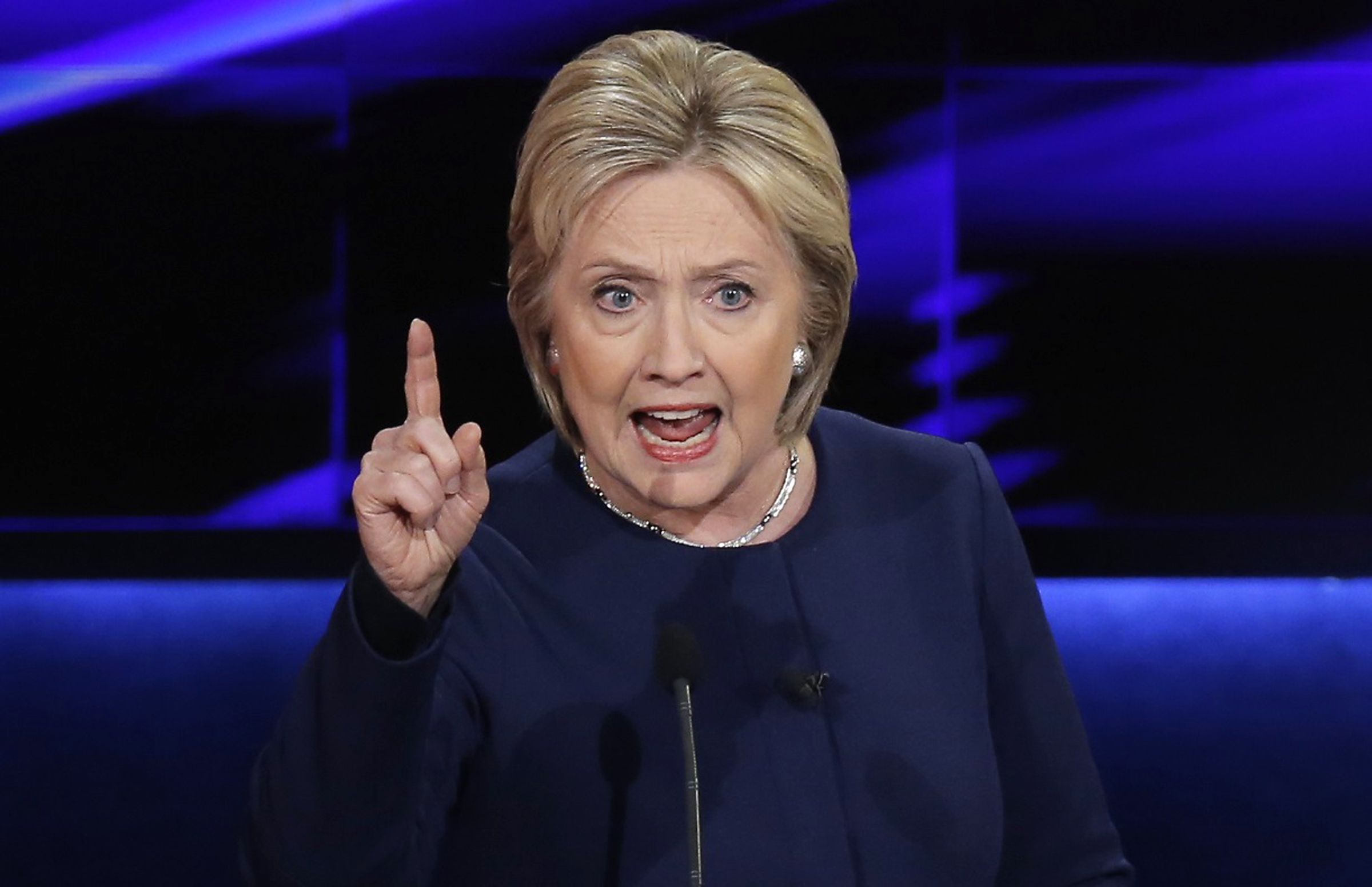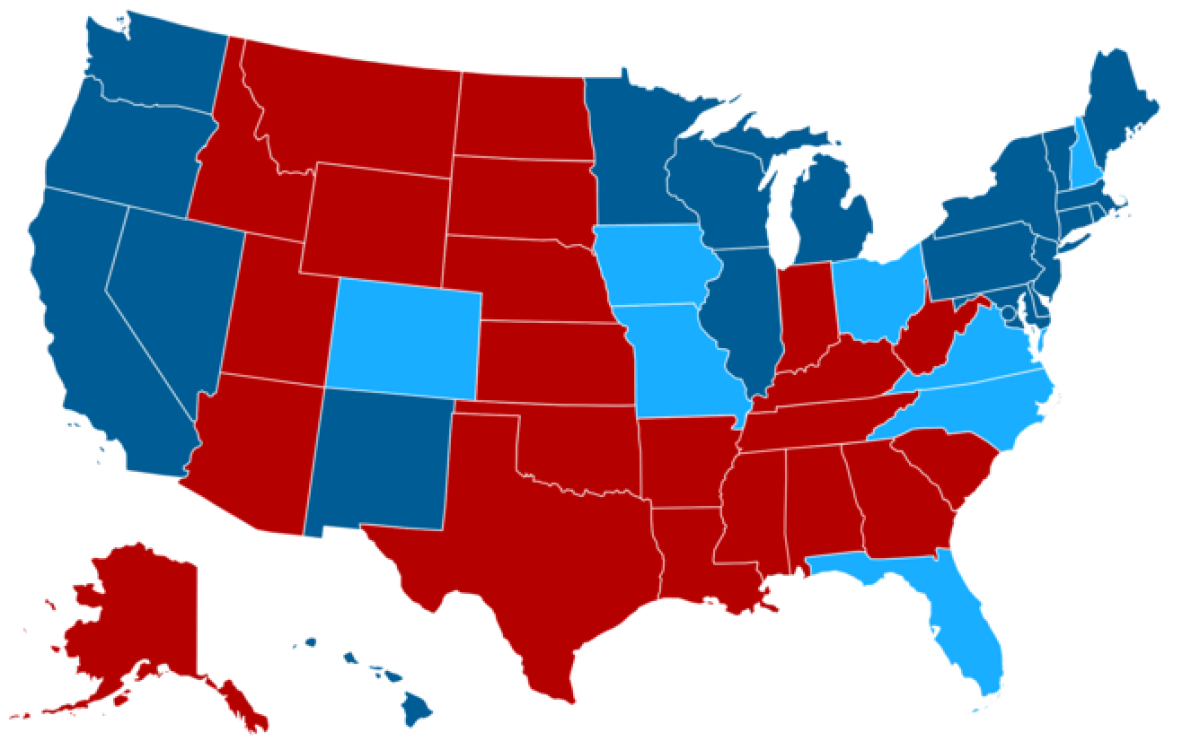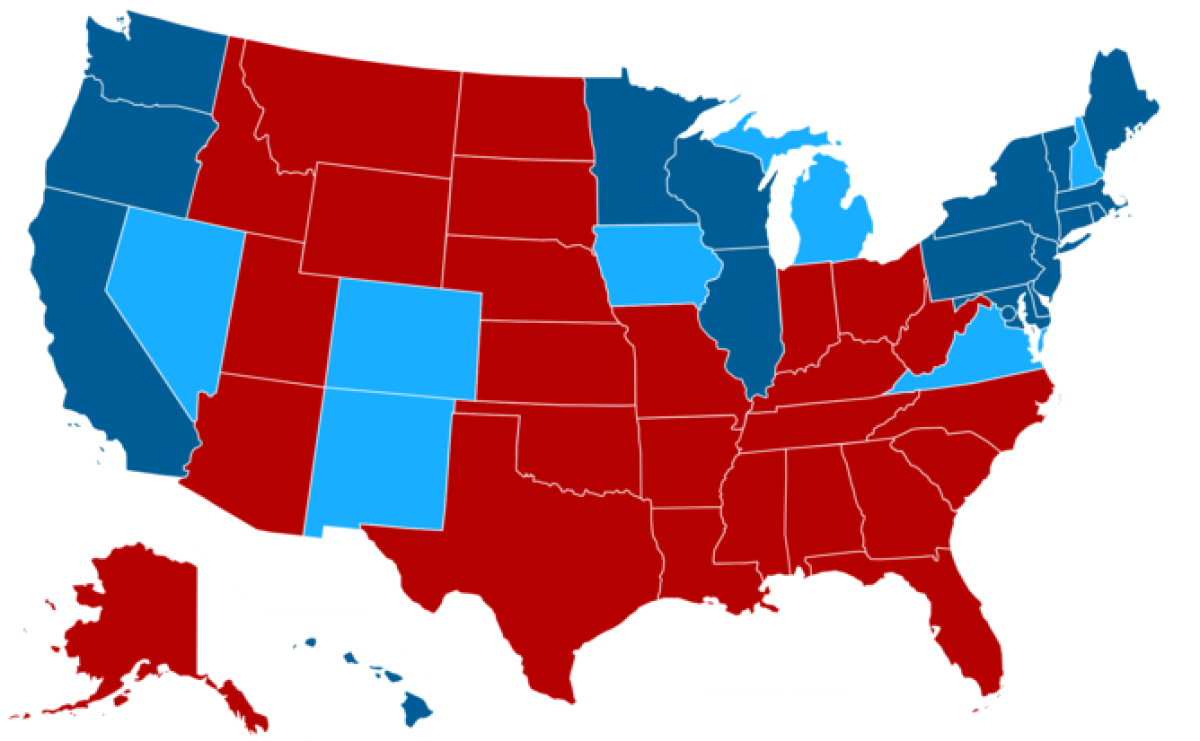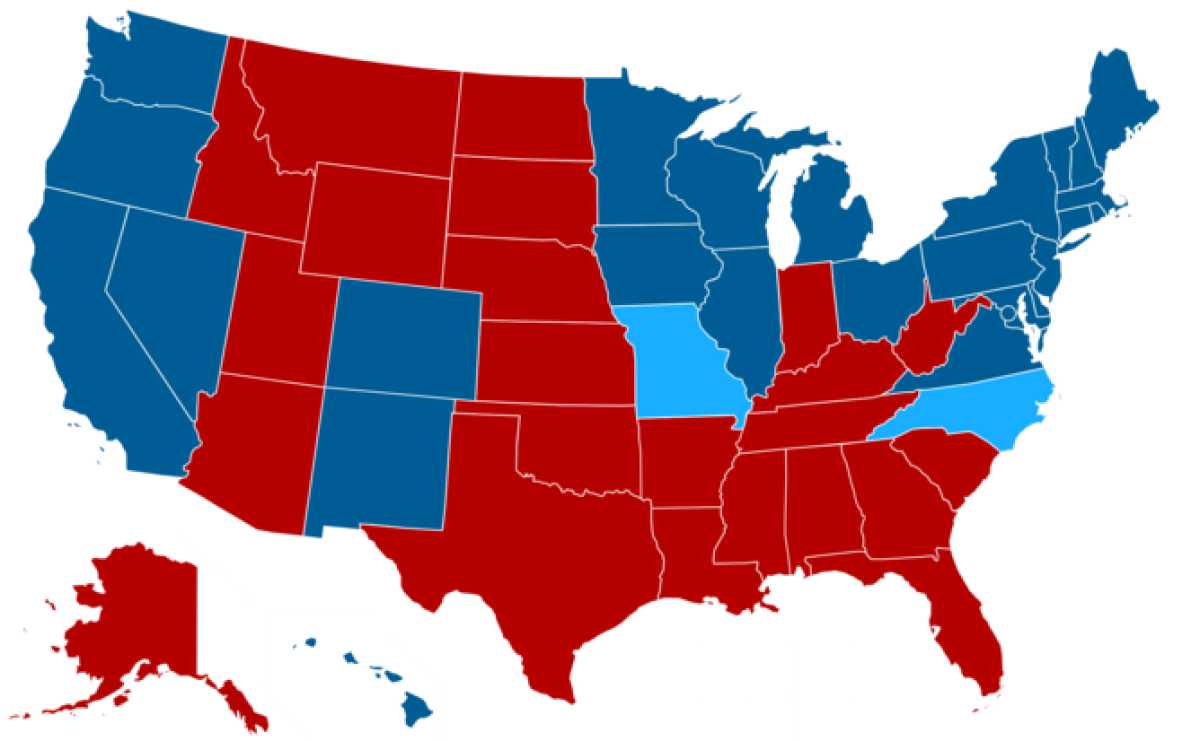
This article first appeared on The Conversation.
And so Super Tuesday as well as Saturday's caucuses and primaries are behind us. If the rest of the primary season holds to this trend, it appears the battle for the presidency will be between Donald Trump and Hillary Clinton. Each leads in both state wins and delegate counts. Clinton has won 12 of 19 contests, garnering 1,121 of the 2,383 needed delegates. Trump has also won 12 of 19 states and 382 of the 1,237 delegates needed to win the nomination.
A common argument made by candidates is that they—and not their opponents—are electable. Examples of this rhetoric can be seen in both political parties. Bernie Sanders, expecting a Trump victory on the Republican side, has said that Hillary Clinton cannot defeat Trump in the general election. On the Republican side, Marco Rubio has clearly stated the he is the "best chance" to beat Hillary Clinton.
However, how valid are these claims of exclusive electability?
Why Most Headlines About Electability Are Misleading
Many pundits and political experts rely on national head-to-head polls to arrive at a conclusion about electability. If we rely only on such polls, we get some interesting conclusions.
The following table provides estimated national support for each matchup as of March 3, 2016:
What conclusions could you draw from this table? First, Democratic candidate Bernie Sanders wins in all matchups. Second, Trump loses in all matchups. Third, the outcome of the Cruz versus Clinton election is unclear, as the estimates are both within the margin of error for the estimates.
If we rely on these polls, then we also need to ignore a few things. First, the general election of November 8 is many months away. The true level of uncertainty nine months away from Election Day is much greater than any reported "margin of error."
Second, these polls ignore the value of the vice president. Were Cruz to win the nomination and select Rubio as his running mate, he would have a different probability of winning the election than would be reported in such polls. Conventional wisdom suggests that the vice president has a negligible positive effect on the presidential race, but Cruz may select Rubio as his running mate simply to remove him from competition.
Finally, the U.S. presidential election is not decided based on the nationwide popular vote. It is really a collection of 51 separate elections aggregated and weighted through the Electoral College.
In other words, national estimates, though enlightening about the mood of the country as a whole, are mostly irrelevant in regard to the result of a national election. What's more important is how these head-to-head matchups play out in the battleground states.
In a recently published paper, we introduced a multilevel model that combined state- and national-level polls into a single estimate for each individual state. The model appears to be effective, as it successfully predicted 50 of the 51 elections held in the states, plus D.C., in each of the last three presidential elections.
What does the model have to say about the six possible face-to-face matchups? Did Super Tuesday help the Republicans or the Democrats in the race to the White House?
Cruz Versus Clinton or Sanders
According to the national matchups, Cruz wins neither of these matches outright. He is handily beaten by Sanders by more than 14 percent and is within the margin of error against Clinton.
According to our multilevel model, the expected number of electoral votes won by Cruz against Clinton is only 256. As this is 14 shy of the 270 needed to win the election, the probability that Cruz wins in a contest against Clinton is less than 50 percent.
Against Sanders, Cruz does even more poorly. He receives only 197, falling 73 electoral votes short of a majority and the presidency.
It is interesting that in a matchup against Cruz, Sanders wins all of the states Clinton does, plus three others: Florida, Missouri and North Carolina. In the map below, the dark red states are won by Cruz in both matchups. The dark blue states are won by both Clinton and Sanders. The light blue states are won only by Sanders.

The difference in the two contests goes beyond the electoral maps. The states considered battlegrounds change as well.
If we define battleground states as those where the probability of the Republican candidate winning is between 25 percent and 75 percent, the Cruz-Clinton contest has four battleground states: Colorado, Nevada, New Mexico and Virginia. The Cruz-Sanders matchup has two of those four states safely in the Sanders column, with Colorado, Missouri, Nevada and North Carolina being the battleground states.
Rubio Versus Clinton or Sanders
The multilevel model suggests Rubio could win the race, but only if his opponent is Clinton. In that matchup, Rubio receives an expected 318 electoral votes to Clinton's 220. In a Rubio-Sanders race, Rubio receives an expected 247 votes, with Sanders receiving the remaining 291.
Again, Sanders wins all of the same states Clinton does, and adds a few of his own. Here, those Sanders-only states are Colorado, Iowa, Michigan, New Hampshire, New Mexico, Nevada and Virginia.

Also, as with the Cruz contests, Sanders takes most of the Clinton battleground states and makes them safely Democratic. The battleground states in the Rubio-Clinton race are the usual Florida, Michigan, Nevada, New Mexico, Pennsylvania and Wisconsin, plus the typically blue states of Maine and Oregon. With Sanders the battleground states are just Colorado, Florida, Iowa, Missouri and Nevada. Maine and Oregon return to the safely Democratic column.
Trump Versus Clinton or Sanders
Without question, Donald Trump is the current Republican front-runner. He has been such essentially since entering the race in 2015. This is despite the best efforts of the Republican leadership to dethrone him. In the wake of Super Tuesday, Trump led the field with 319 delegates. Cruz, his closest rival, has only 226 delegates. Rubio, who may be the Republicans' best chance to win the White House, has 110.
So how does Trump do in head-to-head matchups for the general election? According to the model, the expected number of electoral votes won by Trump against Clinton is 236, which is 34 fewer than the 270 needed to win the election. Against Sanders, Trump only receives 203.
As in the other matchups, Sanders does better than Clinton, with Sanders taking all Clinton states plus Missouri and North Carolina.

Additionally, the rule that Sanders makes the Clinton battleground states safer for Democrats holds here as well. With Sanders, only Missouri and Arizona are battleground states.
But…the Election Isn't Today
A few conclusions can be drawn from these maps. First, as usual, the large majority of states are either safely Republican or safely Democratic. Those states that are not, the battleground states, depend on the particular matchup.
Second, paying attention only to the national polls suggests that a Cruz-Clinton contest would most likely end in a Cruz presidency. Paying attention at the state level, this conclusion is not supported. The most likely outcome would be a Clinton win. In fact, the only path to a Republican White House is Rubio versus Clinton.
On the Democratic side, it appears as though Super Tuesday made Clinton inevitable once again. On the Republican side, a knockout blow was not delivered, but Trump became more likely to win the nomination. If the actual presidential election is between Trump and Clinton, and if nothing else happens on the political scene, Clinton will most likely receive 304 electoral votes, 34 more than she needs to win. This is 28 fewer than Obama won in 2012. The difference is Florida.
Finally, all of these estimates, like political polls, are based on some rather untenable assumptions. Namely, they assume either that the election is today or that there will not be a significant political event between now and Election Day.
Mark Payton is head of the Department of Statistics at Oklahoma State University. Ole J. Forsberg is a visiting assistant professor of statistics at Oklahoma State University.
This article was originally published on The Conversation.
Uncommon Knowledge
Newsweek is committed to challenging conventional wisdom and finding connections in the search for common ground.
Newsweek is committed to challenging conventional wisdom and finding connections in the search for common ground.
About the writer
To read how Newsweek uses AI as a newsroom tool, Click here.








